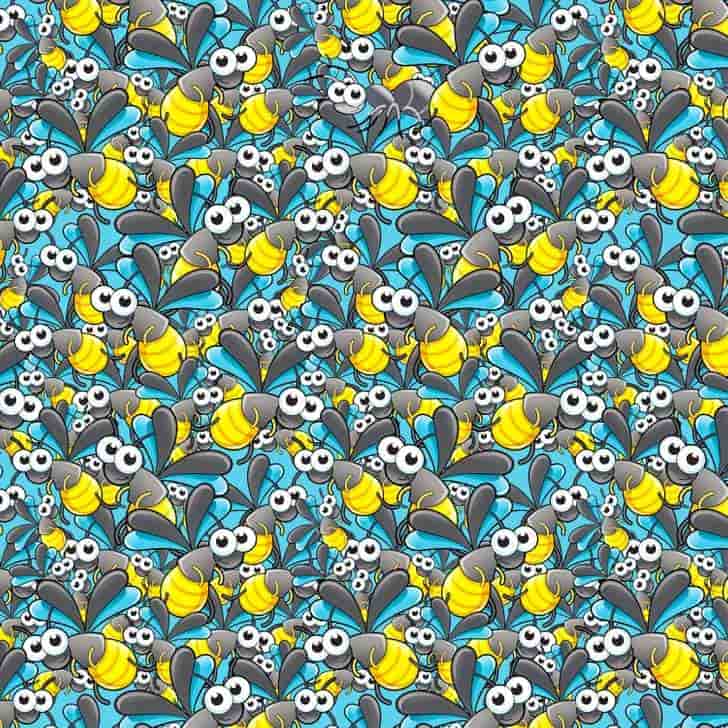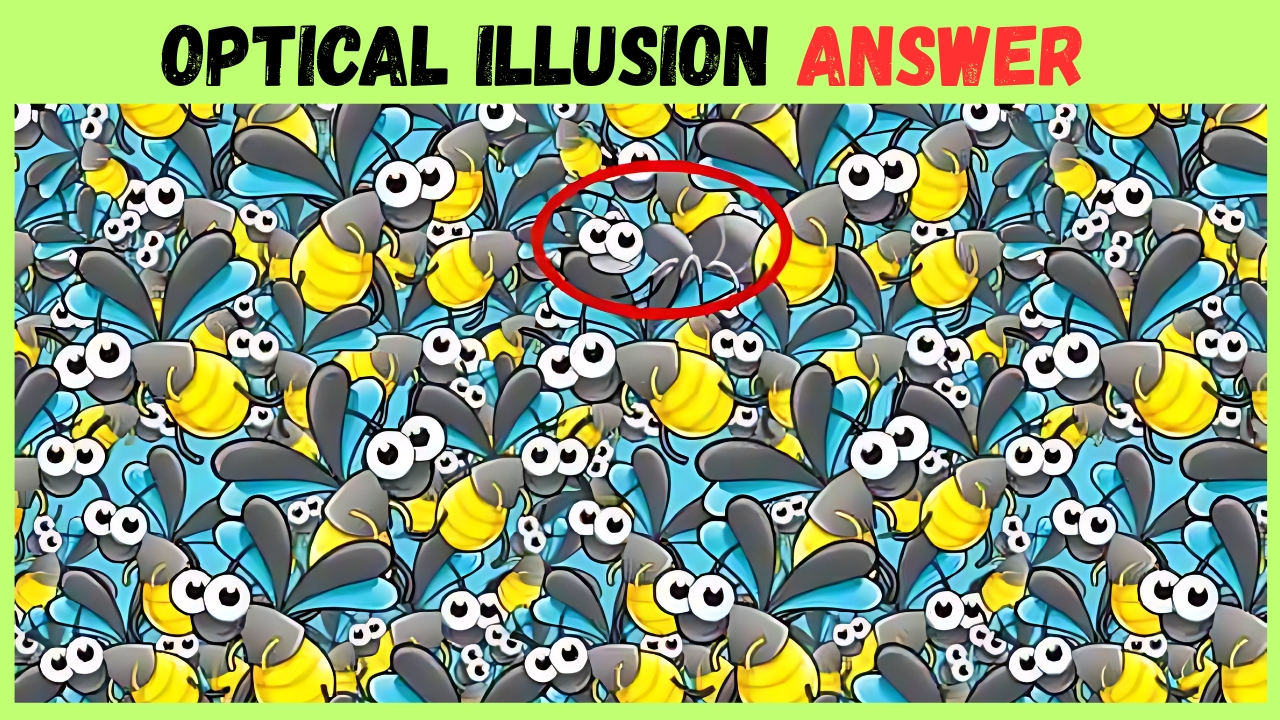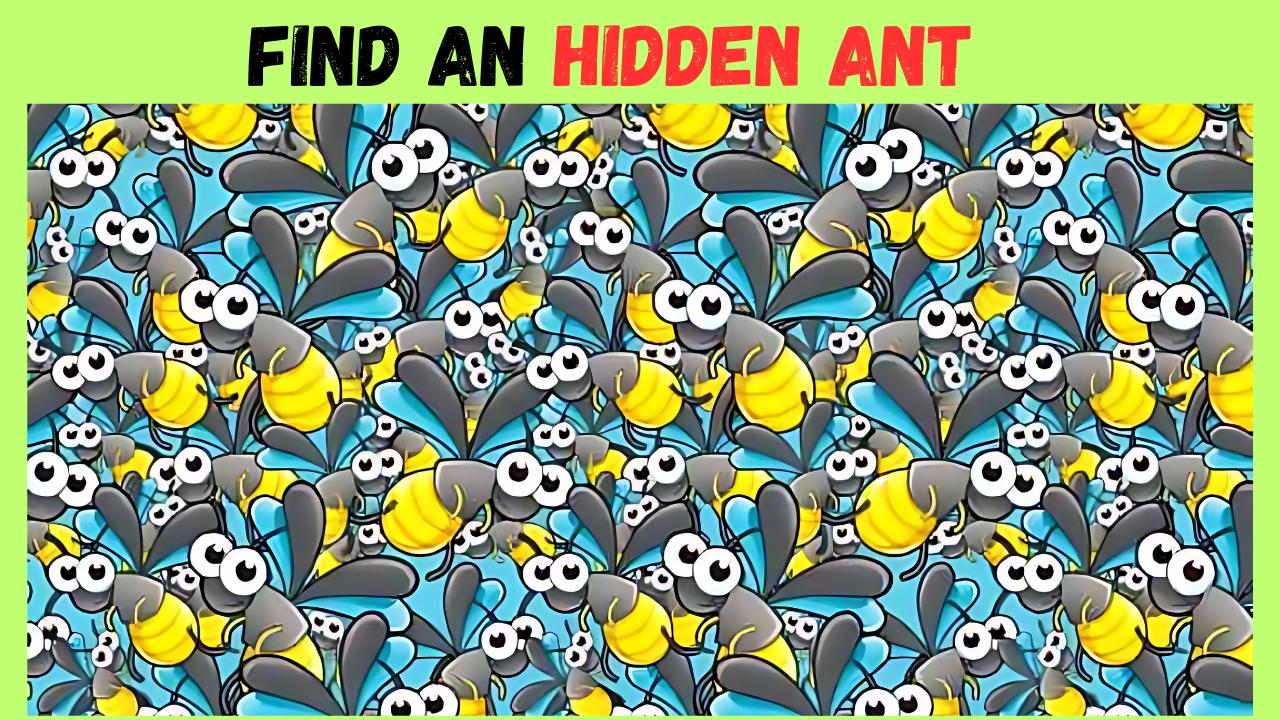Hidden Ant : you’re staring at what appears to be a simple image filled with busy bees going about their day. Somewhere in that swarm, however, a tiny Hidden ant has cleverly disguised itself among the winged insects. Your mission? Find that sneaky little intruder before your friends do.
These “find the hidden object” puzzles have become incredibly popular because they tap into something fundamental about how our brains work. When we look at any image, our minds automatically try to organize what we see into patterns and groups. This natural tendency, while helpful in daily life, can actually work against us when we’re hunting for that one different element hiding in plain sight.
Why Our Brains Fall for These Visual Tricks
Understanding why these challenges stump us reveals fascinating insights about human perception. Our visual system evolved to quickly identify familiar patterns and dismiss things that seem to belong together. When bees fill an image, our brain essentially says “okay, lots of bees here” and moves on, potentially missing the Hidden ant that shares similar colors, size, and placement.
This phenomenon, known as “inattentional blindness,” explains why you might scan an image multiple times before spotting the hidden object. Your brain isn’t malfunctioning – it’s actually doing exactly what it’s designed to do: process visual information efficiently by grouping similar items together.
The Art of Strategic Searching

Rather than randomly scanning back and forth, successful puzzle solvers develop systematic approaches. Think of yourself as a detective examining evidence methodically. Start from one corner and work your way across in a grid pattern, examining each section carefully before moving to the next.
Pay special attention to areas where the pattern seems slightly off. Maybe there’s a creature facing a different direction, or one that’s positioned at an unusual angle. Sometimes the hidden object differs in subtle ways – perhaps it has six legs instead of wings, or antennae that point in a different direction.
Another effective strategy involves changing your viewing distance. Step back from your screen or device, then lean in closer. Different perspectives can help break the camouflage effect that makes the hidden object blend so seamlessly with its surroundings.
Building Your Visual Detection Skills
Regular practice with these puzzles genuinely improves your observational abilities. People who frequently engage with visual challenges often develop enhanced attention to detail that benefits them in real-world situations. Whether you’re proofreading documents, spotting safety hazards, or simply trying to find your keys, stronger visual processing skills prove remarkably useful.
The key lies in training your brain to resist its natural grouping tendencies when necessary. This doesn’t mean fighting against your brain’s efficiency – instead, you’re teaching it when to slow down and examine details more carefully.
Making the Challenge More Enjoyable
Turn these puzzles into social activities by timing yourself and challenging friends or family members. Set a friendly competition to see who can spot the hidden ant fastest. This social element adds excitement while reducing the frustration that sometimes comes with these visual challenges.
If you’re feeling stuck, try taking short breaks. Sometimes stepping away for a few minutes allows your brain to reset, making the hidden object more obvious when you return with fresh eyes.
Optical Illusion Answer

These simple puzzles represent something deeper about human cognition and the remarkable complexity of visual perception. Every time you successfully find that hidden ant among the bees, you’re demonstrating the incredible sophistication of your brain’s ability to shift between different modes of seeing.
Whether you solve it quickly or need several attempts, remember that these challenges are designed to be tricky. The satisfaction of finally spotting that cleverly concealed ant makes the effort worthwhile, and each puzzle you tackle helps sharpen your visual skills for the next intriguing challenge that comes your way.
So grab your detective mindset, take a deep breath, and start hunting for that elusive Hidden ant. Happy searching!
